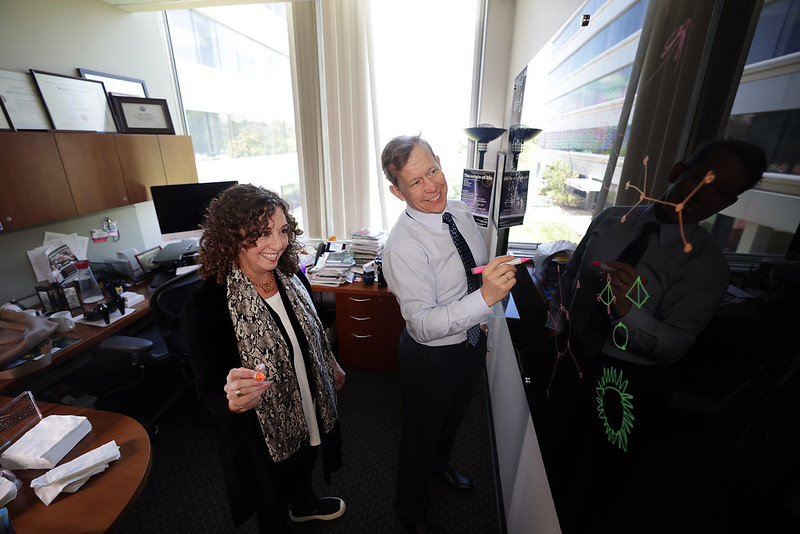
Sharon Glotzer named a Clarivate Citation Laureate
23 world-class researchers have been selected for exhibiting exceptional levels of citation among the scientific community within the areas of science recognized by the Nobel Prize.

23 world-class researchers have been selected for exhibiting exceptional levels of citation among the scientific community within the areas of science recognized by the Nobel Prize.
Sharon Glotzer, the Anthony C. Lembke Department Chair of Chemical Engineering, has been honored as a Clarivate Citation Laureate among a cohort of 23 world-class researchers who have made significant contributions across a diverse range of fields.
Citation Laureates are selected for exhibiting exceptional levels of citation among the scientific community in areas of science recognized by the Nobel Prize. This recognition highlights Glotzer’s contributions to the fields of chemical engineering, physics and materials science, including demonstrating the role of entropy in the self-assembly of matter and introducing strategies to control the assembly process to engineer new materials.
“I am incredibly honored by this recognition of my group’s research,” Glotzer said. “We’re very excited about our science and this acknowledgment is just fantastic.”
Glotzer’s career is marked by years of pioneering research and a commitment to pushing the boundaries of scientific understanding. Her career has been defined by research in the fields of computational materials science, soft matter physics and molecular thermodynamics, and through her novel use of computer simulation has significantly advanced our understanding of the fundamental principles governing the behavior and assembly of particles at the nanoscale. Coined “patchy particles” by Glotzer in 2004, the nanoparticles arrange themselves in different ways based on their anisotropic shape and interparticle interactions, producing a myriad of structures with novel potential properties.
“This is where entropy does some really surprising things,” Glotzer said.
For example, her group’s research leveraging computer simulations to craft ‘fire ice’ structures using nanoparticles that interact entropically was recently highlighted on the cover of Nature Chemistry. The work revealed an unexpected behavior in which the entropy of the system of nanoparticles behaved as though it’s compartmentalized into different subsystems, and has the potential to revolutionize the manipulation of light, introducing novel possibilities.

Since 2002, Clarivate has named Citation Laureates in the areas of science and economics recognized by the Nobel Prize. Citation Laureates, as the designation implies, exhibit exceptional levels of citation among their peers and have produced multiple highly cited papers. To date, more than 400 Citation Laureates have been selected and as of 2022, 71 Citation Laureates later received the Nobel Prize, more than half within three years of being named a Citation Laureate.
Beyond illuminating the unusual ways in which entropy can manifest in materials, Glotzer has demonstrated how entropy can be engineered to achieve desired outcomes. Her group’s “digital alchemy” simulation method for nanoparticle design equips scientists with the means to design and engineer particles with customized properties, ushering in fresh avenues for crafting advanced materials with exact specifications. This, in turn, has led to applications of self-assembling nanosystems in fields such as drug delivery and optical displays.
Throughout her career, Glotzer has published influential papers in leading scientific journals. Her research has garnered tens of thousands of citations, underlining its significance and impact within the scientific community.
Glotzer is also the science lead of the newly launched NSF-funded Center for Complex Particle Systems (COMPASS), the John Werner Cahn Distinguished University Professor of Engineering, the Stuart W. Churchill Collegiate Professor of Chemical Engineering, and a professor of materials science and engineering, macromolecular science and engineering, and physics.